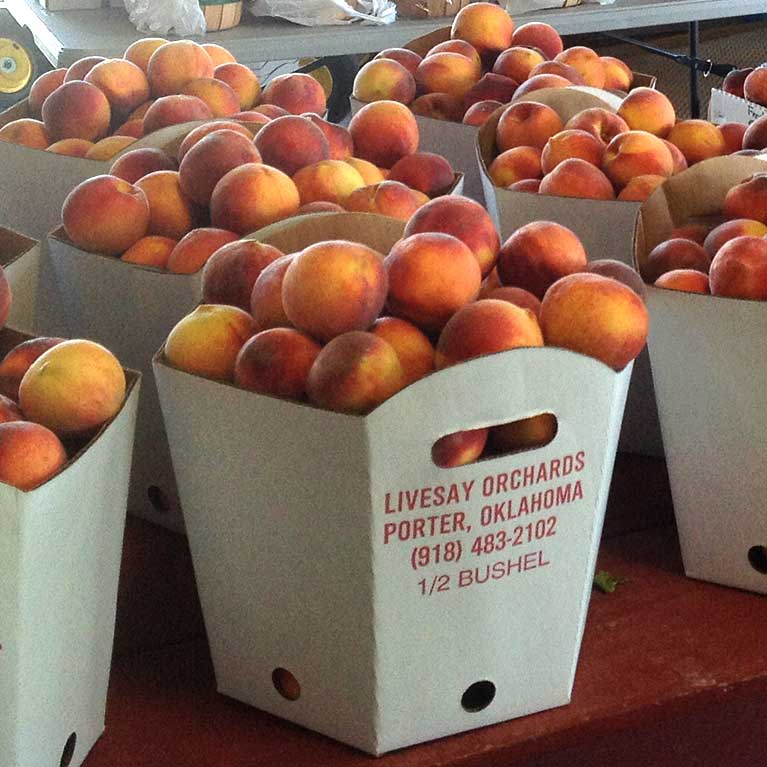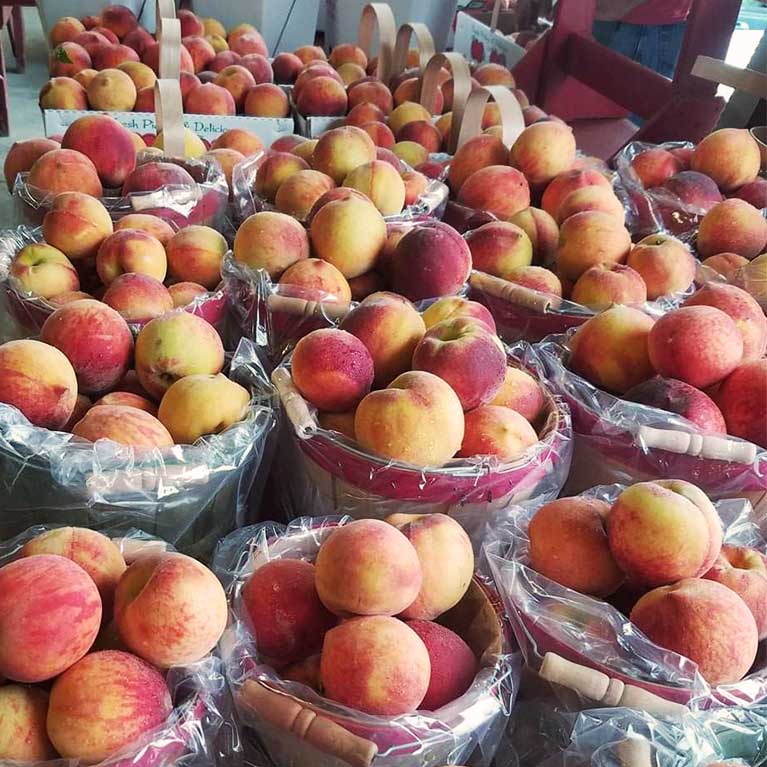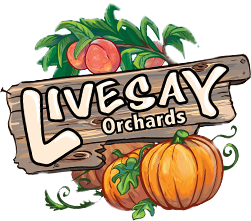Getting to Know Peaches

Types of Flesh Traits
Peaches and nectarines come in many different combinations of flesh traits.
Flesh Color – Typically separated into just “yellow” or “white” but “yellow” can range from a cream-yellow all the way to a deep red.
Flesh Texture – There are two main categories: Melting and Non-melting. Some peaches fall in between and are considered Semi-melting. Most of the peaches and nectarines we grow are Melting with just a few varieties from the Semi-melting and Non-melting categories.
Flesh Acidity – We typically only categorize our peaches or nectarines as Standard Acid or Low Acid. Acidity is one of the few flesh traits that has a major impact on flavor.
Grades of Peaches
#1’s are our best peaches – almost perfect peaches.
#2’s are peaches with small defects (such as a limb rub or hail damage) or are mis-shapened, which will only affect the skin so the defect can be peeled away.
Soft or Bruised peaches are ready to consume or have been bruised during the harvest or grading process. They can be used for baking or eating fresh; however, part of the peach may be soft where bruised and the rest still be firm.
Types of Stone Traits
Freestone
Freestone Peaches have a flesh that does not stick to the stone (pit), so slicing the peach or eating the peach without slicing is much easier. They are also great for baking and preserving.
Our freestone peaches are typically in season from early July through early October, with the peak of the season being mid-July through mid-August.
Semi-Freestone
Semi-Freestone Peaches have a flesh that comes somewhat away from the stone.
We start our peach season with these and suggest they be used for fresh eating while waiting for the freestone peaches to ripen, which are easier for slicing. These are typically in season from June through early July.
Clingstone
Clingstone Peaches have flesh that clings to the stone. We do not grow any clingstone peaches.
A Few Tips
- Look for a creamy gold to yellow under color. The red or “blush” of a peach is more of an indication of the variety rather than the ripeness.
- Here at Livesay Orchards, we typically harvest our peaches and nectarines firm-ripe to prevent excessive bruising of the fruit. These firm-ripe fruits will need to ripen a couple days to reach peak tastiness.
- Place firm peaches on the counter in a single layer at room temperature and they will ripen within a few days. To ripen quicker, place peaches near an apple or banana which release natural ethylene gas.
- When peaches are at the ideal ripeness for immediate consumption they should be soft to the touch but not mushy. Handle peaches gently, not squeezing or dropping them, as they bruise easily.
- To slow down the ripening of peaches, promptly refrigerate them. Peaches can be refrigerated at any stage of ripening but will have the longest shelf life by being placed in while firm and being set out to ripen on the counter as desired.
- Eat, bake, freeze, can, or dehydrate peaches within a week of purchase for best quality.

Conversion Charts for Purchasing
One pound of peaches is the same as:
- 3 medium peaches
- 2 cups sliced peaches
- 1 ½ cups peach puree
2 medium to large peaches = 1 cup sliced peaches
1 bushel peaches = 18-24 quarts canned or 32-48 pints frozen
2-2.5 lbs. = 2 pints frozen
